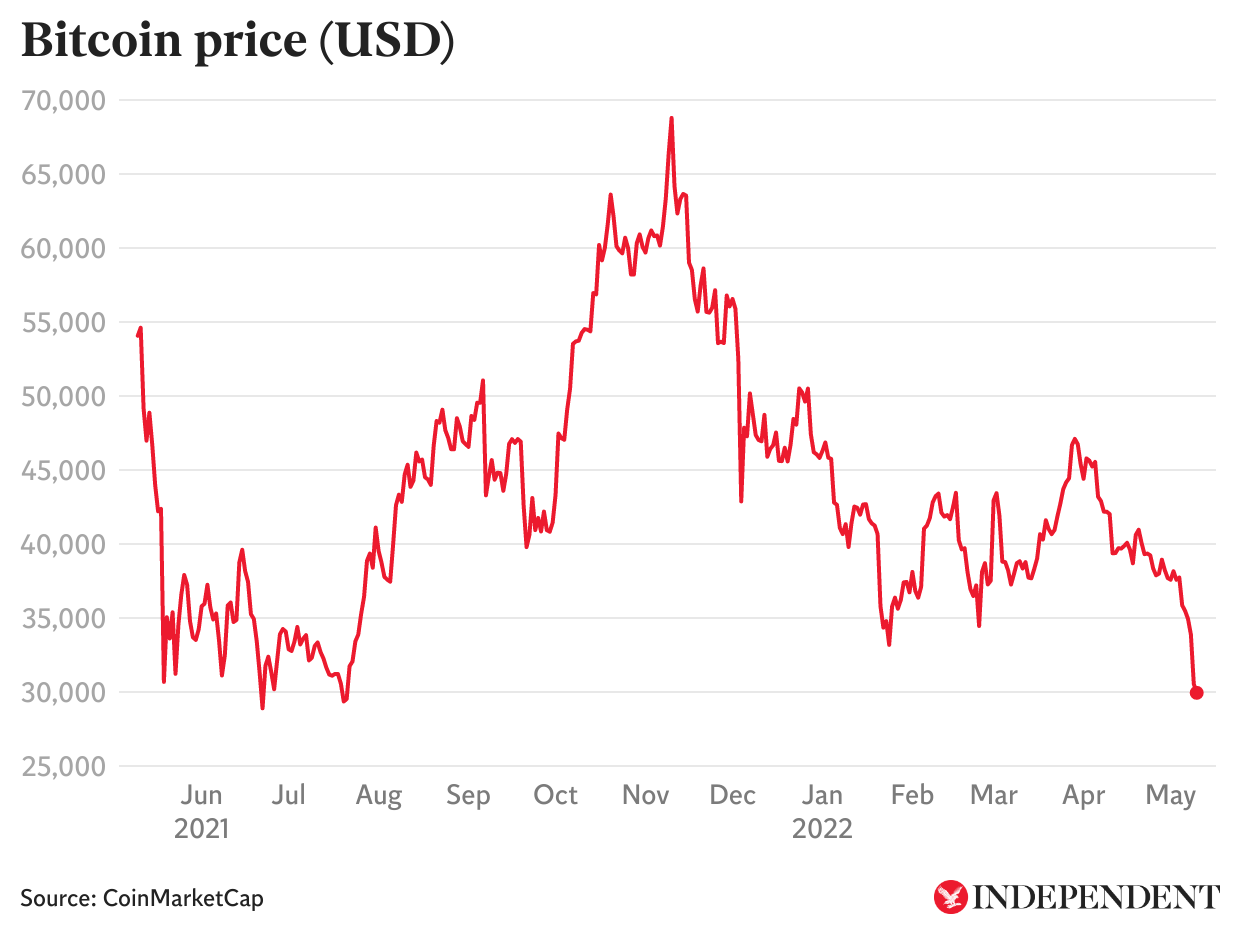Why did bitcoin’s price crash and where does it go from here?
BTC slumps to lowest level since July 2021 as $1.7 trillion wiped from crypto market over last six months
Bitcoin has crashed. Again. The cryptocurrency is down more than 50 per cent from the all-time high it experienced just six months ago, with investors fearing that the collapse could be even more severe if a key resistance level is breached in the coming days.
But whichever way it goes from here in the short term, history suggests that it will not be down forever. The death of bitcoin has already been pronounced by the media more than 400 times, according to one site that tracks its obituaries, most recently in a piece in the Spectator titled ‘Crypto is dead’.
“Cryptocurrencies face not so much a rapid crash as a slide into nothingness,” it claimed. The same publication in 2019 declared cryptocurrencies as “scams”, warning that “anybody who puts any money into them and loses the lot only has themselves to blame”. At the time bitcoin was worth just over $3,000 – a tenth of its current value.
The obituaries typically coincide with major price corrections, which are then usually followed up by even more major price rallies. Over the last decade, bitcoin has fallen in value by 50 per cent or more on six occasions. Each time it has bounced back to a new all-time high within a couple of years.
Reasons for these crashes can range from pandemics to nationwide crackdowns on cryptocurrencies, though more recently they have appeared to line up with movements of traditional markets. With more retail investors onboard than ever, and the increasing integration of existing financial infrastructure that allows institutional investors to join in, crypto has become more in step with the stock market, particularly tech stocks.
With Nasdaq experiencing its sharpest one-day fall since June 2020 this week, it is there fore no surprise that bitcoin and the broader crypto market also took a hit.
“With cryptocurrency fast gaining legitimacy in the financial world and rising in popularity among hedge funds, we should expect to see cryptocurrencies increasingly mimic the movements of global stock markets,” Michael Kamerman, chief executive of trading platform Killing, told The Independent.
“Cryptocurrencies are increasingly moving in sync with tech stocks, with investors treating both as risk assets and often retreating to safer corners of the market duing bouts of market volatility.
”Wider trends such as the US, UK and Australia raising interest rates, coupled with the US Federal Reserve hiking its key lending rate to the highest level in 20 years, are significant factors that will impact cryptocurrency’s performance.”

Despite the recent downtrend, Mr Kamerman noted several factors that could shift the momentum and fuel a market-wide recovery.
El Salvador was recently joined by Central African Republic in adopting bitcoin as a legal form of tender, marking a broader trend of countries introducing laws to encourage the spread of cryptocurrency use. Meanwhile the US has unveiled plans to introduce much-needed regulation to the space, and the UK has announced plans to become a crypto hub in order to re-energise its position as a global financial hub in the wake of Brexit.
Regardless of positive news in the space, however, one factor that could prove critical for bitcoin’s price trajectory over the coming weeks and months is whether it is able to hold above the $30,000 level where it is currently hovering. This price has proved to be a key support during previous downturns, with bitcoin never having fallen below it for any significant period of time since it first rose above it at the start of 2021.
“Technically, bitcoin’s structure is bearish as lower-lows and lower-highs persist, but bitcoin is now approaching the bottom of the 16-month range,” said Marcus Sotiriou, an analyst at the UK-based digital asset broker GlobalBlock.
“The region near the low of the range, from $28k-$32k, could be a good region to add to holdings... [as] on-chain metrics remain incredibly bullish, with the percentage of bitcoin that has not moved in a year now at an all-time high.”

Join our commenting forum
Join thought-provoking conversations, follow other Independent readers and see their replies
Comments